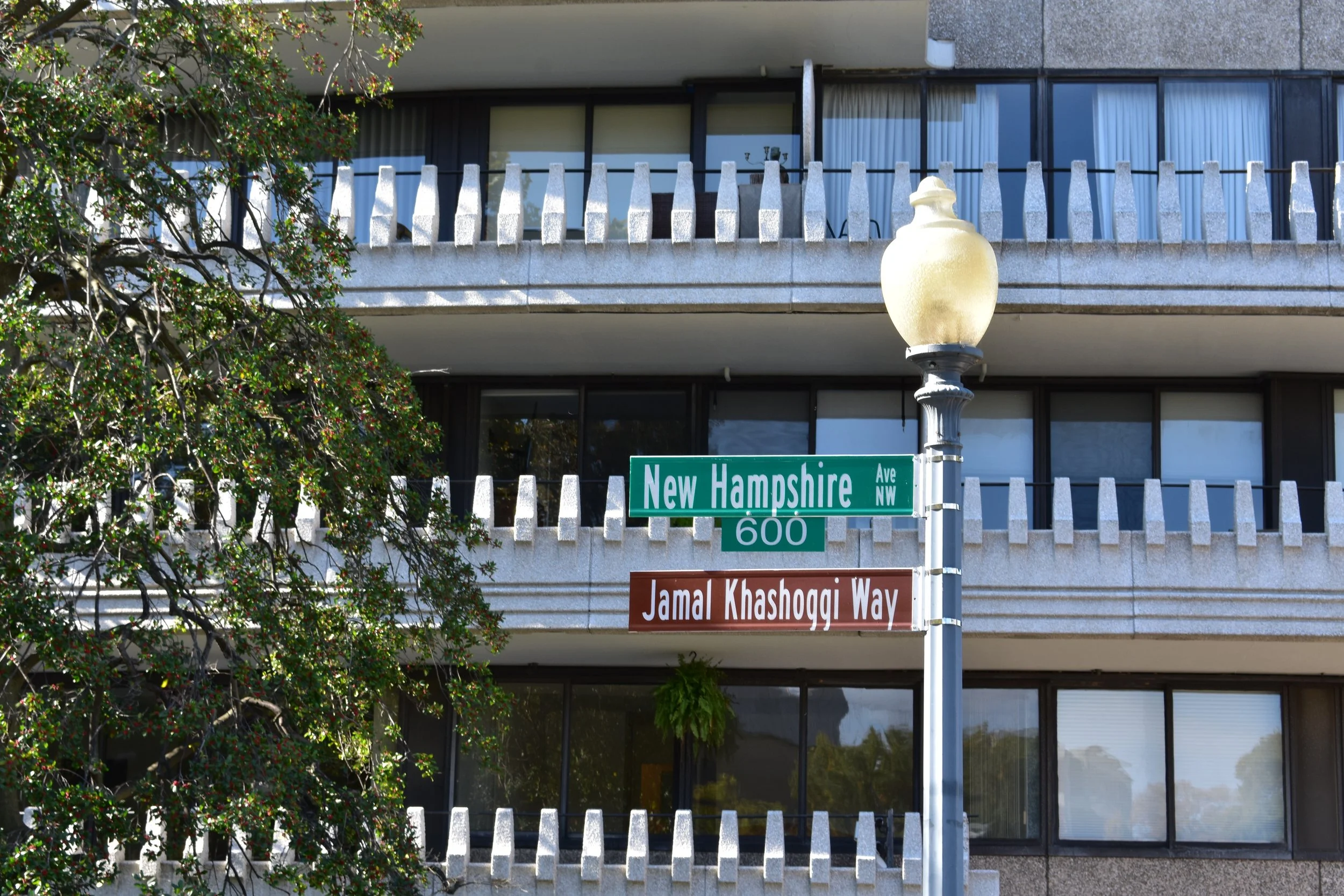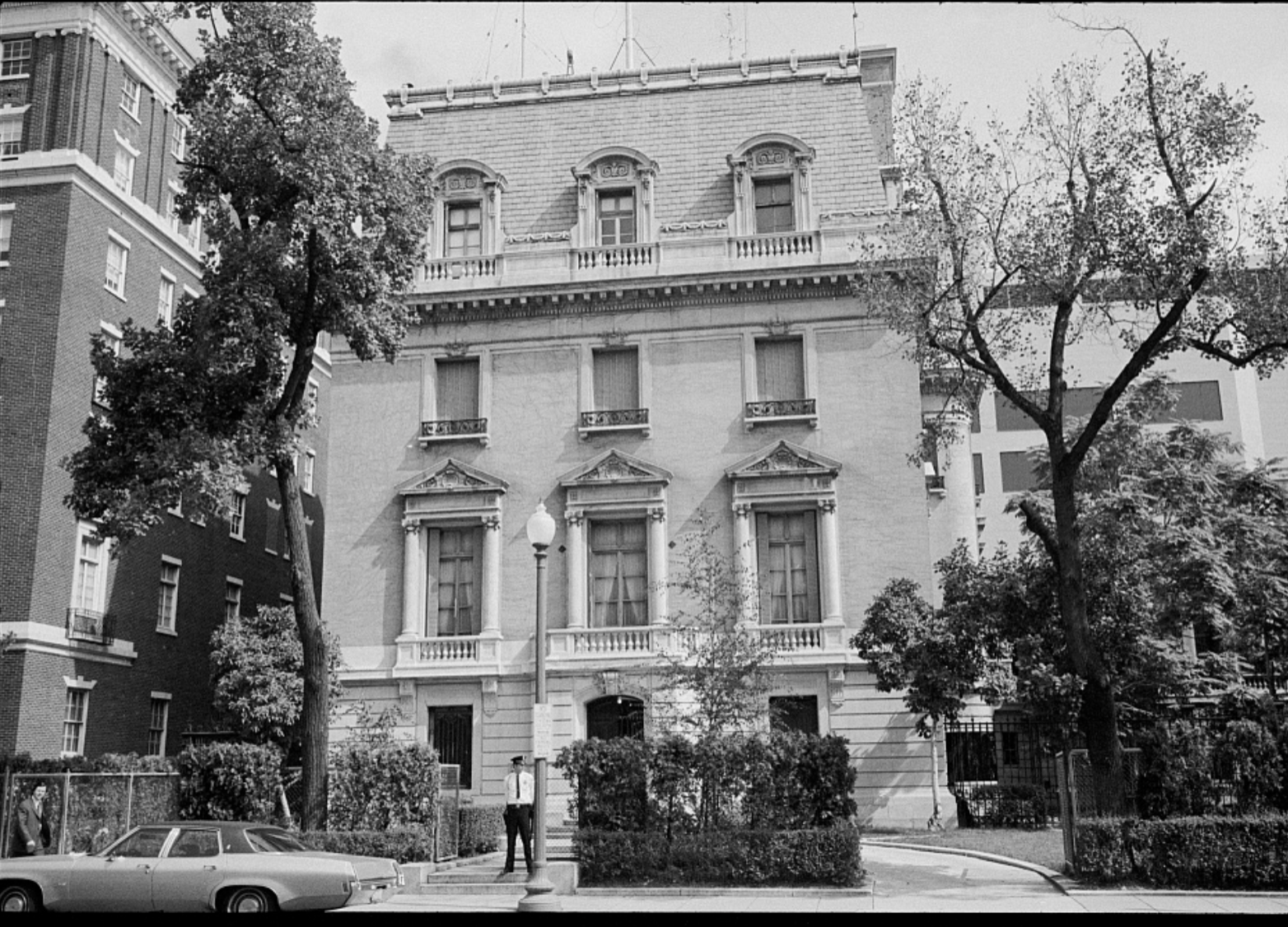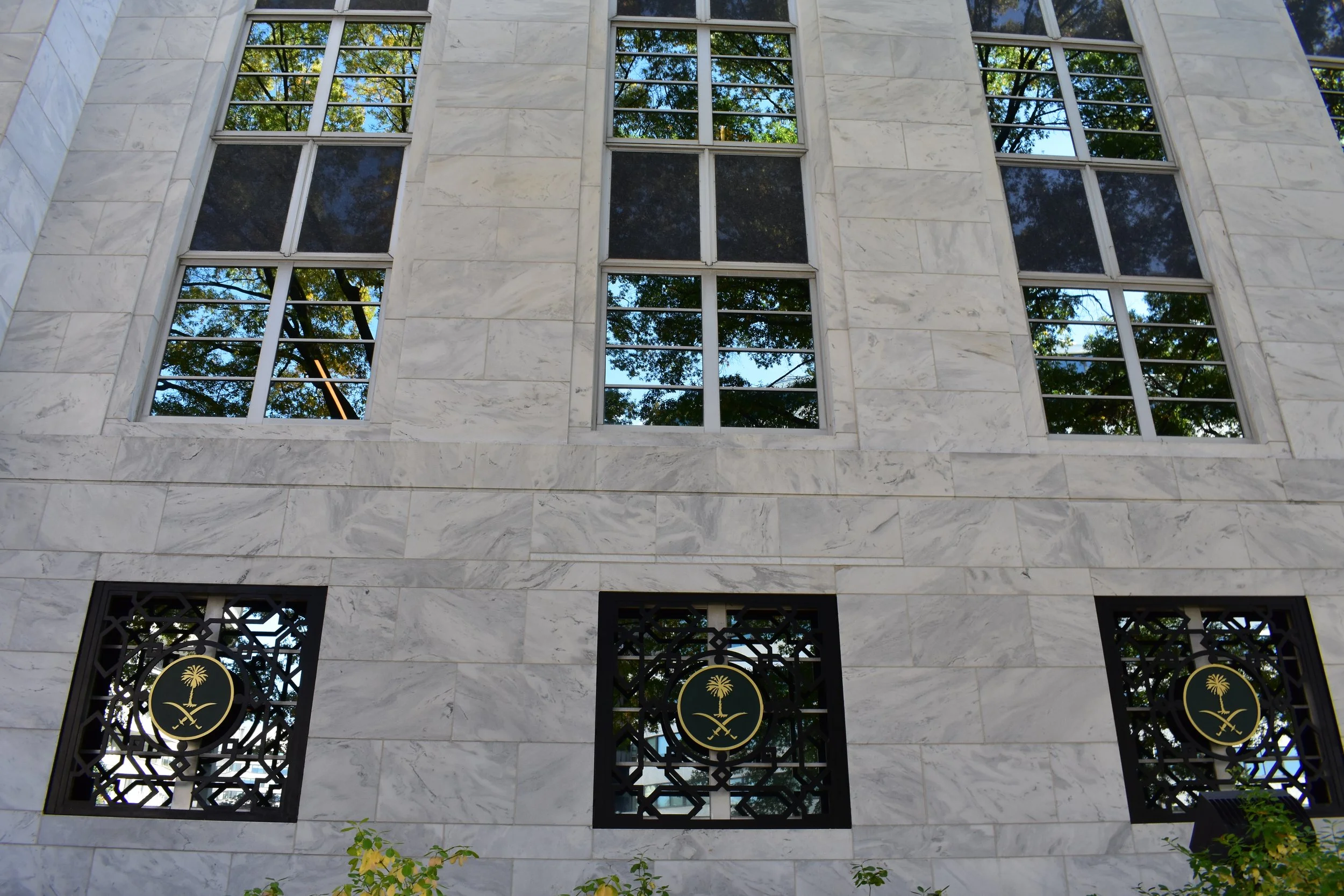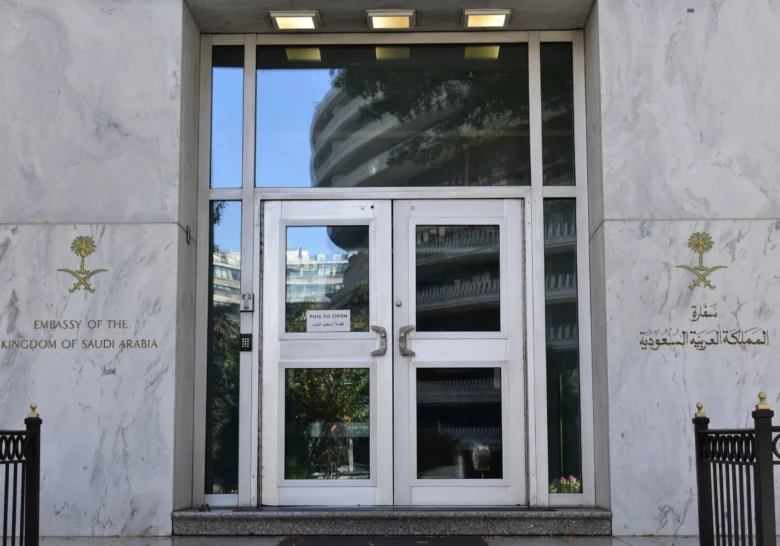In January 1983, the news that one of the oldest businesses in the District of Columbia was planning to relocate its headquarters to North Carolina garnered headlines, leaving many to wonder about not only the fate of the company’s many employees, but that of its massive headquarters, built in the 1950s and heralded at the time as “one of the city’s prime pieces of real estate.”
The People’s Insurance Company had been founded in the District in 1903, and had built the 115,000 square foot property with five stories above ground, and two below, in 1959, after having outgrown its three previous office locations, most recently on 14th and H St NW.
Designed in a “modern version of federal style to harmonize with governmental architecture in the Capital City,” The Washington Post reported, the building was constructed… “of Georgia marble facing with spandrels of Swedish granite.” At the time of its move to the new headquarters, People’s reported 250 home office employees,1100 full time agents and managers, and an additional 193 salaried employees in 61 offices throughout seven states and D.C. While many of the employees were offered positions at the new headquarters in North Carolina, one senior executive openly stated that he realized that not all would accept.
In March 1983, People’s Insurance sold their headquarters at 601 New Hampshire Avenue NW to a foreign government. This was just after the Foreign Missions Act passed in 1982, so there was some speculation whether the purchase would be approved by DC Zoning Board. Ultimately, the deal went through for an undisclosed amount and the former People’s Insurance headquarters indeed became an embassy.
On a clear, sunny Saturday afternoon in October, I stood on the sidewalk to photograph the building. There is no fence surrounding it, and with the Swedish granite sparkling in the sun, I photographed it from several angles, as I have so many other buildings with interesting past lives before they became embassies.
That single random act of sidewalk photography brought a Secret Service agent and two Metropolitan Police officers to my door eleven days later. Later that night, after they had left, I nearly collided with a man with a suit and vehicle too expensive for my modest apartment building, with shiny shoes and a lapel pin eerily similar to the insignia on the embassy, walking in my apartment’s parking lot looking at vehicles. A man who Secret Service later told me, but never fully convinced me, was probably not foreign intelligence.
I’ve photographed embassies in Washington, D.C. and elsewhere for more than a decade without incident. I probably should have known this time would be different.

To reach the Embassy of Saudi Arabia, you have to take Jamal Khashoggi Way.
It’s a spur of a street on which the former People’s Insurance headquarters is the sole embassy, far from the diplomatic clusters along Massachusetts Avenue or in International Chancery Court in the Van Ness neighborhood. The nearest neighbors are the Kennedy Center and the Watergate complex, but for all intents and purposes, there is only one address on the street named for The Washington Post columnist assassinated at the Saudi Arabian consulate in Istanbul in 2018.
It’s not the first time a street has been renamed outside an embassy in Washington D.C. to shame the people inside.
With its renaming by the D.C. City Council in December 2021 and the ceremony that followed in June 2022, Jamal Khashoggi Way joined Boris Nemtsov Plaza, the street outside Russia’s embassy complex, named in 2018 in honor of a Russian opposition politician murdered outside the Kremlin in 2015.
In 1987, after several stalled attempts, a portion of Sixteenth Street outside the then-Soviet embassy was renamed Andrei Sakharov Plaza. The Soviet scientist and Nobel Peace Prize laureate had been detained and persecuted throughout much of the early 1980s. According to extensive coverage in The Washington Post archives accessed through the DC Public Library, at the time of the first attempt, which began during Sakharov’s hospitalization and hunger strike in 1984, District of Columbia officials objected, citing a policy that only allows individual’s names to be put on streets two years or longer after their death. The State Department claimed renaming the street was a violation of the Vienna Convention on Diplomatic Relations “to prevent the impairment of the dignity of foreign missions.” It was only after Sakharov had been released and allowed to return to Moscow that the signs were finally hung in Andrei Sakharov Plaza. (Many years later, Sakharov died peacefully at home at the age of 68.)
More recently, immediately following the announcement of the death of Alexei Navalny, Senators Durbin and Cassidy introduced a bill calling for the street outside the Russian ambassador’s residence to be renamed in his honor.
“The world is shaken at the news of Alexei Navalny’s death,” said Dr. Cassidy. “Renaming the street near the Russian Ambassador’s residence, Navalny Way memorializes his fight for freedom and democracy. When Russians visit our nation’s capital, they will remember his unflinching opposition to Putin’s dictatorial control.”

Eleven days after I photographed the embassy and the sign, a neighbor phoned to tell me a Secret Service agent and two Metropolitan police officers were looking for me.
When I joined the three men in the building’s lobby, the Secret Service agent explained the guard at the embassy had notified the Secret Service of my photographing the embassy and requested they investigate. I explained I’m a journalist, and own a media outlet dedicated to embassies, showed them Diplomatica’s website on my phone, and handed them a business card. I shared that I had met a Saudi attaché at an embassy mixer event at the National Press Club the week prior and had mentioned I would be photographing the embassy. I provided them his name and contact information. The Secret Service agent assured me I did nothing wrong. The encounter was brief and cordial but left me wondering.
I followed up with the agent via email to determine what, exactly prompted the complaint against me. I was told, as cordially as our first interaction would imply, that the Secret Service’s “records in Protective Intelligence Investigations are not made available to the public. Also, as you can imagine, how embassies report such incidents that they deem concerning/threatening/suspicious, are also not public record.”
“Finally, as you know, you were well within your rights to take pictures from a public sidewalk, and as many as you want,” he added, “As a professional writing about diplomatic topics, I know you understand the nature of privacy and security better than most. Therefore, I don’t think you would or should have to change your behavior.”
The Secret Service agent had explained that the police “were only there in a supportive role and weren’t aware of the substantive facts of my query.” Because I had forgotten to record the interaction myself, I filed a public records request with the Metropolitan Police for their records of the exchange including body cam footage. It’s now past the window when that request should have been granted, and I’m told that my “requests are currently being researched. An estimated completion date cannot be given at this time.” I wrote to the Saudi attaché who attended the event at the National Press Club to request the embassy’s policy on reporting people photographing the building, and have not received a reply.

Certainly embassies have security protocols and face threats, and in the United States, the Secret Service is tasked with protecting diplomatic missions from those threats. However, in the more than a decade that I’ve been photographing embassies, inside and out, for this newsletter and other reporting, no other country has sent the police to my home.
It is perhaps no surprise that this is the one that did.
In his last column for The Washington Post, published after his death, Khashoggi wrote of the failed promise of the Arab Spring.
“Journalists, academics and the general population were brimming with expectations of a bright and free Arab society within their respective countries. They expected to be emancipated from the hegemony of their governments and the consistent interventions and censorship of information. These expectations were quickly shattered; these societies either fell back to the old status quo or faced even harsher conditions than before…”
“As a result, Arab governments have been given free rein to continue silencing the media at an increasing rate. There was a time when journalists believed the Internet would liberate information from the censorship and control associated with print media. But these governments, whose very existence relies on the control of information, have aggressively blocked the Internet. They have also arrested local reporters and pressured advertisers to harm the revenue of specific publications.”
It’s no wonder that Khashoggi moved to the United States, safe to be in a country where journalism is the only profession explicitly protected in the Constitution, safe to speak out against human rights abuses in Saudi Arabia on the pages of one of the most respected newspapers in the world.
For as long as this street is named Jamal Khashoggi Way it will serve as an insurance policy, that all of the embassy staff, and everyone who comes to photograph the building and wonder about its history, will remember him, and what was done to him, and the people responsible.
Even if this sign is the only consequence they’ll face.
Read Jamal Khashoggi’s final column in The Washington Post.
*February 19, 2024: This article has been updated to reflect the reported death of Russian opposition leader Alexei Navalny, and Senators Durbin’s and Cassidy’s bill to rename the street outside the Russian Ambassador’s residence in his honor.
